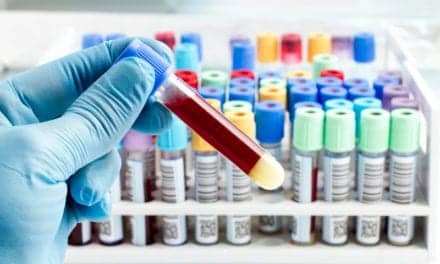A blood test that analyzes levels of amyloid proteins by highly sensitive mass spectrometry could help physicians establish that Alzheimer’s disease (AD) is likely not the cause of patients’ mild cognitive impairment, finds a new study published in Frontiers in Neurology by researchers from Quest Diagnostics, the University of Florida and Mount Sinai Medical Center in Miami Beach.
Cost-Effective Alternative: Blood Tests vs. PET Imaging in Alzheimer’s Assessment
According to the analysis, up to 99% of patients with a negative result for amyloid proteins in the brain using an imaging procedure called positron emission tomography (PET) would likely be negative using a blood test that evaluates a ratio of amyloid beta 42 and 40 proteins (Aβ42/40), which are found in the brain and also circulate in the blood stream. With this level of prediction, the investigators determined the test could help reduce PET brain scan evaluations by about 40%, with potentially substantial savings in healthcare costs for these patients.
While amyloid PET imaging is an established method for aiding diagnosis of Alzheimer’s, it is significantly more expensive, invasive and specialist-dependent than blood tests.
“The findings of this analysis in a large cohort have significant implications for AD care management, because they potentially mean many patients could benefit from this type of blood-based assay that has advantages relative to current approaches,” says co-author David E. Vaillancourt, PhD, Orchid Professor and Chair Applied Physiology and Kinesiology, College of Health and Human Performance, Fixel Institute of Neurological Disorders and Director, 1Florida ADRC Biomarker Core.
Further reading: Promising Pathways to Simplified Alzheimer’s Diagnosis Identified
Beyond Imaging: Exploring New Frontiers in Alzheimer’s Detection
The study, Clinical utility of plasma Aβ42/40 ratio by LC-MS/MS in Alzheimer’s disease assessment, is believed to be one of the largest published studies to evaluate amyloid blood testing for AD assessment. The investigators analyzed 6,192 deidentified laboratory test results from patients whose physicians submitted specimens for testing by Quest’s Aβ42/40 ratio test (brand name Quest AD-Detect Beta-amyloid ratio testAΒ42/40). Clinical performance of the Quest test was established using 250 specimens from participants with amyloid PET imaging and demographic data from the 1Florida Alzheimer’s Disease Research Center. Quest introduced the AD-Detect test to physicians in early 2022.
The investigators also evaluated the performance of the blood test by different interpretative ranges based on different cutoffs, or amyloid levels in the blood. Proposed guidelines from the National Institutes of Aging recommend blood biomarker testing account for different ranges by cutoff levels, including an intermediate range, to support clinical decision-making.
Key Findings of the Study
- High NPV across populations: The test’s negative predictive value (NPV) was 99% (at the highest cutoff of 0.170) in a population with moderate prevalence of AD (40%) as determined by PET-positivity. NPV represents the likelihood a disease is not present in a given population. The investigators then applied the NPV of 99% to the population of 6,192 deidentified specimens tested by Quest for Aβ42/40. They determined that 40% of that population could reliably forgo additional evaluation by PET, which costs about $5,000 per scan.
- High sensitivity for AD PET-positivity at lower cut off: The test was 91% sensitive for detecting AD, as determined by PET scan at a cutoff of 0.160 in a population with moderate prevalence of PET-positivity of 40%.
In the same population and cutoff, the specificity was 76%. The same investigative team recently published results of a study in Alzheimer’s & Dementia that showed the “novel and important” finding that abnormal Aβ42/40 blood testing “associates with quantifiable changes in the tissue and extracellular microstructural environments” of the brain, even in PET-negative patients.
“These findings show Aβ42/40 testing is very helpful in identifying amyloid pathology in populations with a high prevalence of AD, particularly older individuals,” says study co-author Michael Racke, MD, Medical Director of Neurology at Quest Diagnostics. “We believe the comparatively low specificity reflects the limits of PET scans to identify the earliest stages of AD pathology and that many of these patients will progress to be PET-positive as the disease worsens.”





